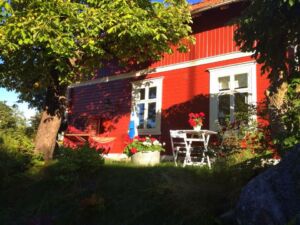News
Doing summer the Danish way
This article is more than 10 years old.
The Danish summerhouse has long played a key role in many Danes holiday season

There are 179,000 holiday homes in Denmark (photo: Pia Marsh)
Denmark has one of the highest numbers of paid vacation days worldwide, and Danes are known to spend their treasured holiday period in one of two distinct places: abroad on a beach somewhere warm, or at a summerhouse.
Summerhouses are a core part of Danish culture – Danes just love them. Often nothing more than a small and simple shack, summerhouses give Danes a chance to strip back to basics and appreciate the long-awaited summer season with the great outdoors close in sight.
According to recent figures from Danmarks Statistik, there are approximately 179,000 second homes in Denmark, ranging from summerhouses to allotments and other types of recreational properties.
Approximately 44 percent of holiday homes are situated in Jutland, 16 percent of Fyn and other islands, while the remaining 40 percent are built on Zealand.
Attracted to the ease of it
For many Danes, the convenience and accessibility of a summerhouse holds great appeal.
“Summerhouses represent an affordable option for people to enjoy their holidays and weekends. Often, the properties are passed down through family and become something of a family tradition, associated with kicking back and spending time together,” said Erik Slentø from Danmarks Statistik.
“Whilst many Danes love to travel overseas, there are many that simply prefer to stay in Denmark and spend time in their holiday home, as it is an uncomplicated and much less stressful alternative to travelling abroad.”
And according to statistics, 62 percent of Danish holiday homeowners live more than 40 km from their house, with only 8 percent of vacation homeowners residing less than 5 km away.
“The accessibility of the summerhouse plays a huge part in its popularity. Most holiday homes are easy to use, even on weekends, as the properties are usually no more than a few hours drive away.”
Earthoria asserts that the average Danish summerhouse has 3.5 rooms (approximately six beds), a living area of 67 square meters and a value of 14,252 kroner per square meter.
More popular than ever
According to Danmarks Statistik, Danish summerhouses are more popular than ever before, with records of Danish cottage rentals at an all time high over this year’s summer period.
However, statistics reveal that Germans account for over 68 percent of Danish holiday home rentals, whilst Danes accounted for only 18 percent.
And with over 93 percent of holiday homes located in a distance less than 2.5 km from the Danish coastline, it is perhaps not so surprising to see their appeal.










































